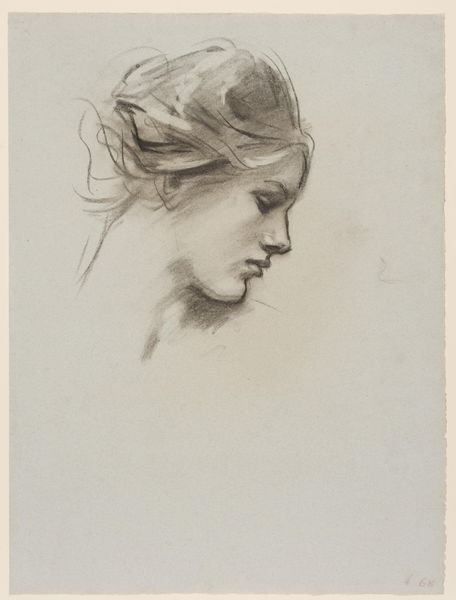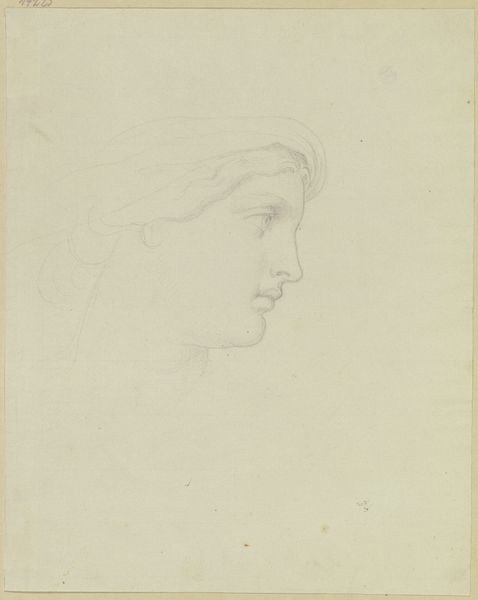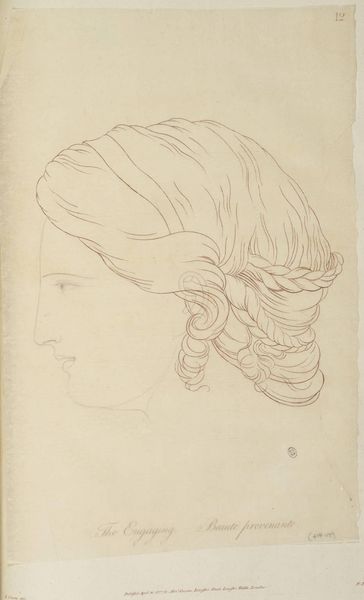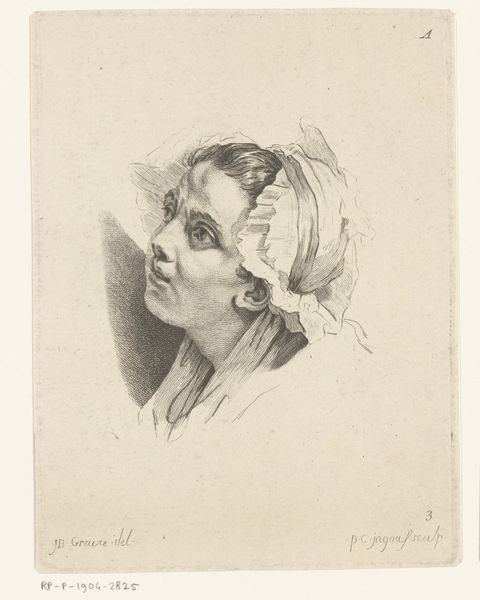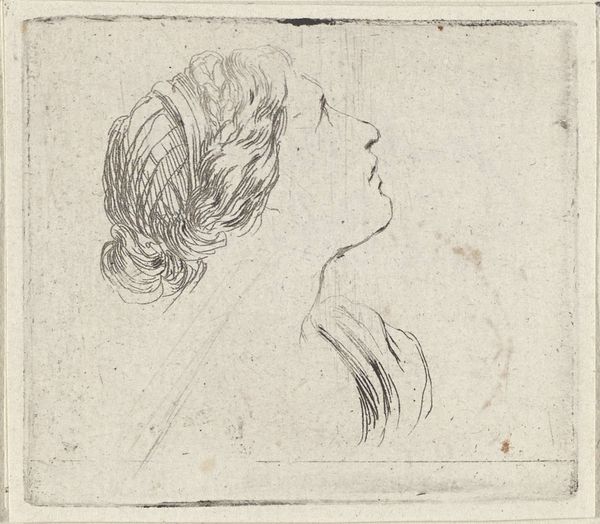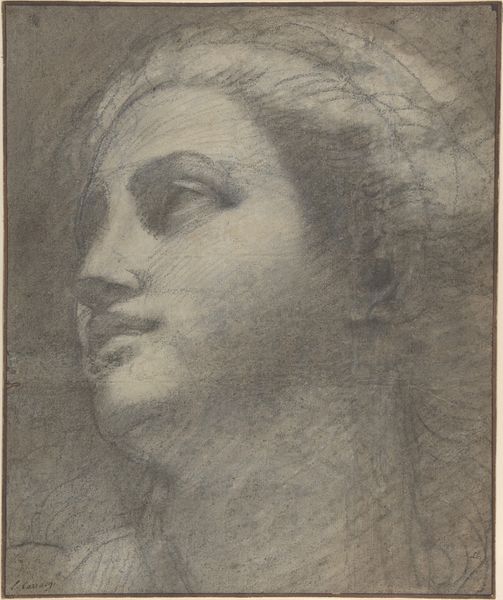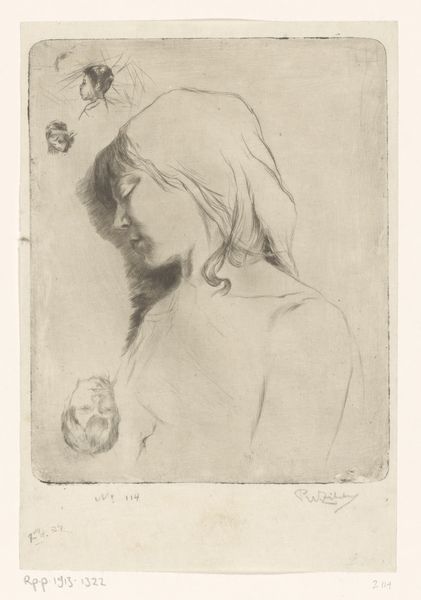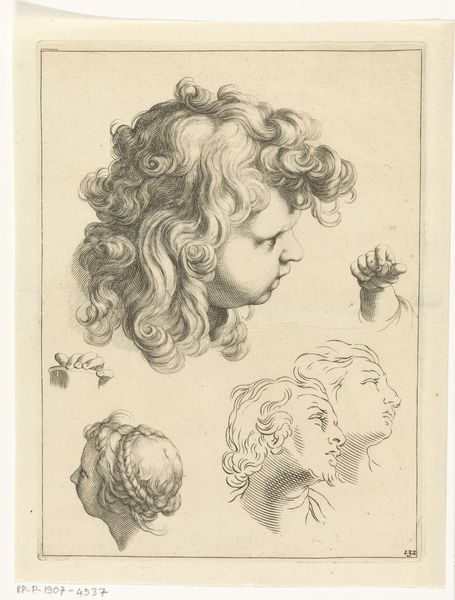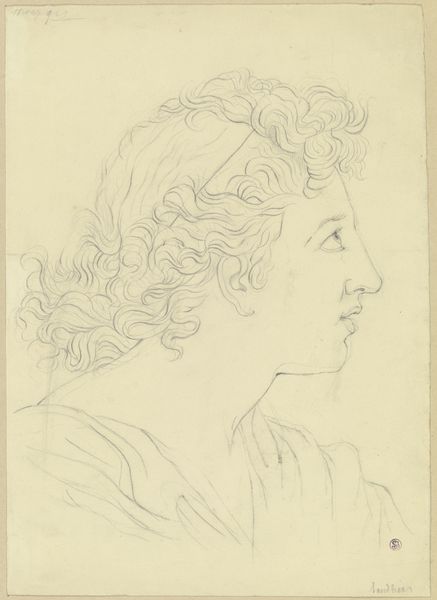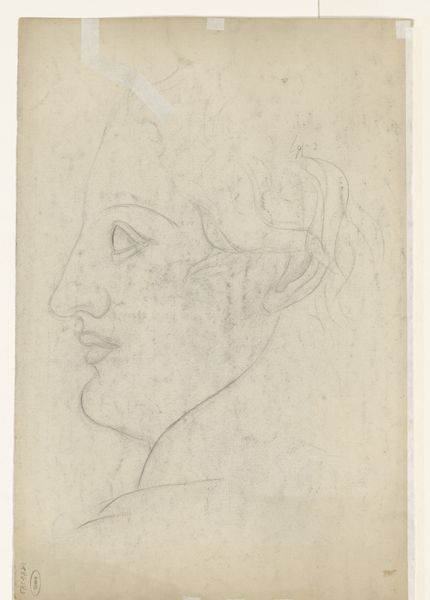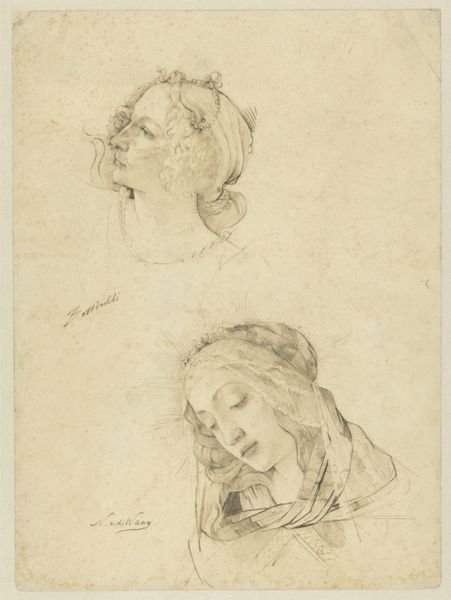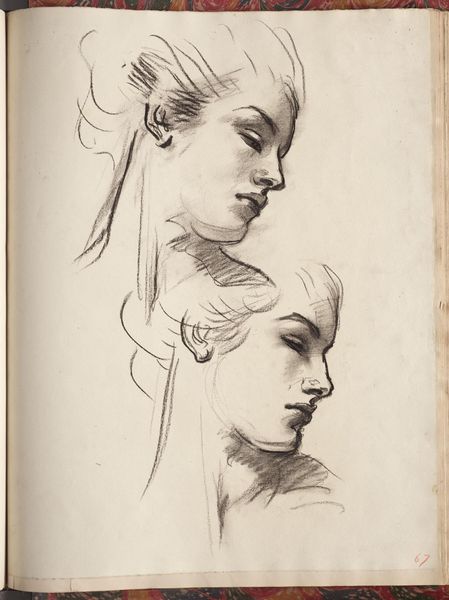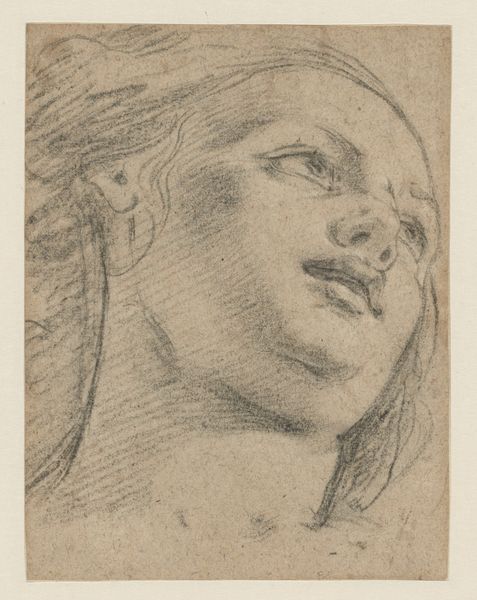
drawing, pencil
#
portrait
#
drawing
#
pencil sketch
#
romanticism
#
pencil
#
sketchbook drawing
#
portrait drawing
#
watercolour illustration
#
academic-art
Dimensions: height 423 mm, width 369 mm
Copyright: Rijks Museum: Open Domain
Curator: This delicate work is “Vrouwenkop,” or “Head of a Woman,” a pencil drawing created around 1848 by August Allebé. It currently resides here at the Rijksmuseum. Editor: Immediately, it feels fragile. That downturned gaze and soft shading evoke a quiet melancholy. The paper itself seems aged and almost whispering. Curator: Yes, there’s definitely a whisper there! Allebé really captured the romantic ideals of the period. What interests me most is the almost sculptural quality he achieves with a relatively simple medium. Look at the layering, the deliberate use of shadow… it feels almost like he’s carving light. Editor: Carving, exactly. I’m struck by the evident labour, even within this seemingly spontaneous sketch. See the precision around the contours of her face and neck, and even in the depiction of the simple head covering. This is someone who understands the discipline inherent to the craft of drawing and who uses that to manipulate, and therefore heighten, the emotional value. The material constraints almost intensify the subject's pathos. Curator: And pathos is definitely at the heart of it. The sitter's eyes hint at some unspoken sorrow, but the drawing is far from maudlin. It seems very much aligned to academic art ideals. Editor: Right, because even as it elicits pathos, there is clearly an attention to the production and refinement. Her delicate profile rendered in lead—it connects her, in some elemental way, to the material world. Pencil seems like the perfect medium. It’s so humble and immediate; he wasn’t showing off. It's direct, raw even. It removes any possible sense of spectacle. Curator: It's that unvarnished quality, perhaps, that resonates so deeply. Allebé gives us a window into a moment of introspection. Editor: It's almost voyeuristic, isn't it? Considering it was created in the dawn of mass production, the value of its materiality lies in the act of resisting that trend. A portrait executed by hand, foregrounding labour and detail – perhaps it encourages viewers to resist the accelerating world of mechanisation? Curator: Precisely! This exploration of "Vrouwenkop," I think, offers us insight into the relationship between emotion, skill, and material in the Romantic era. It almost acts as a gentle prodding… Editor: …Reminding us of the quiet power held within the seemingly simple act of drawing.
Comments
No comments
Be the first to comment and join the conversation on the ultimate creative platform.
